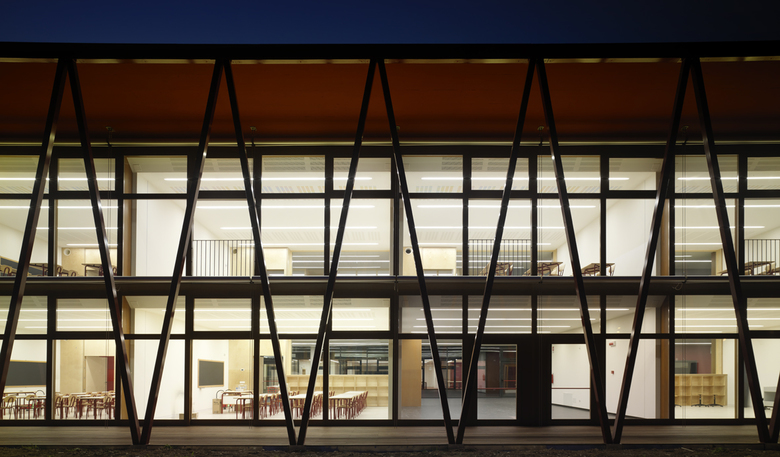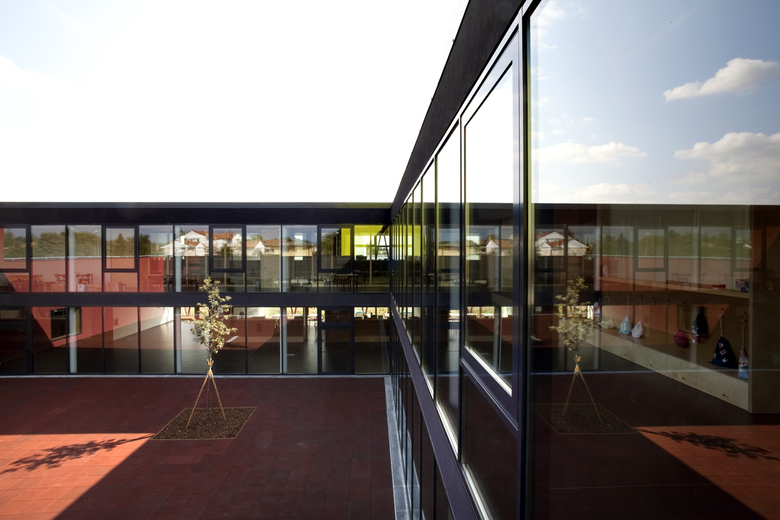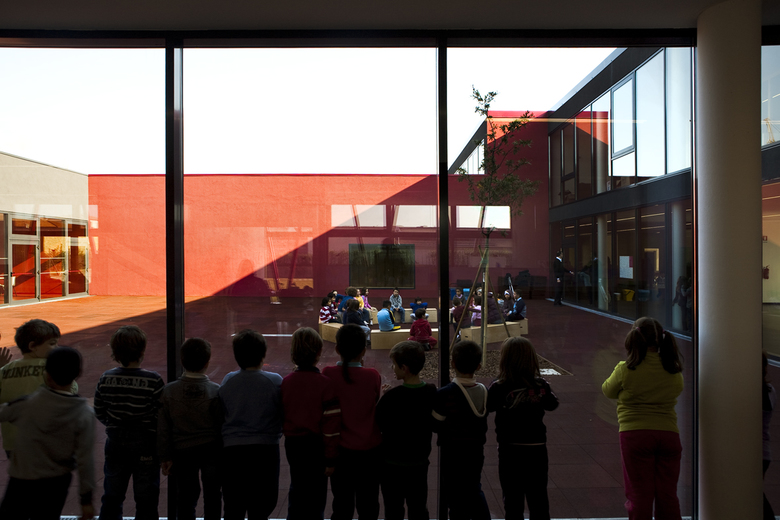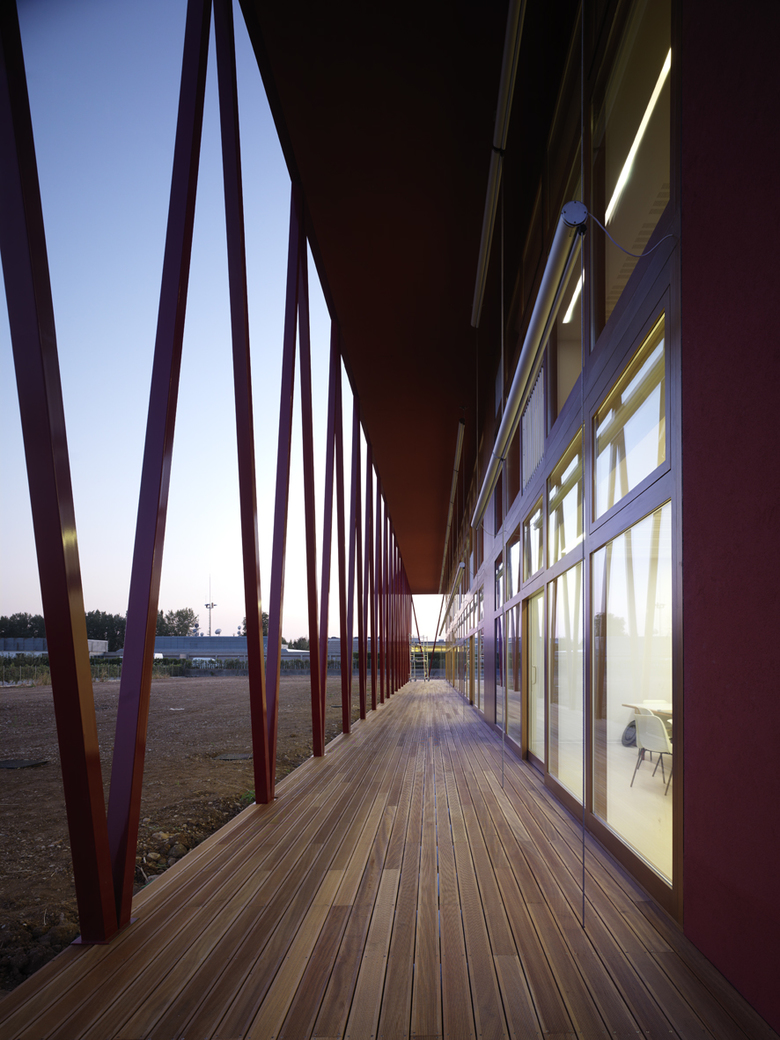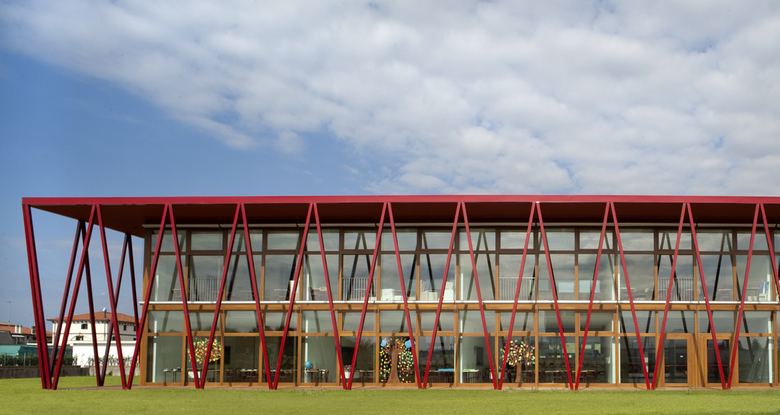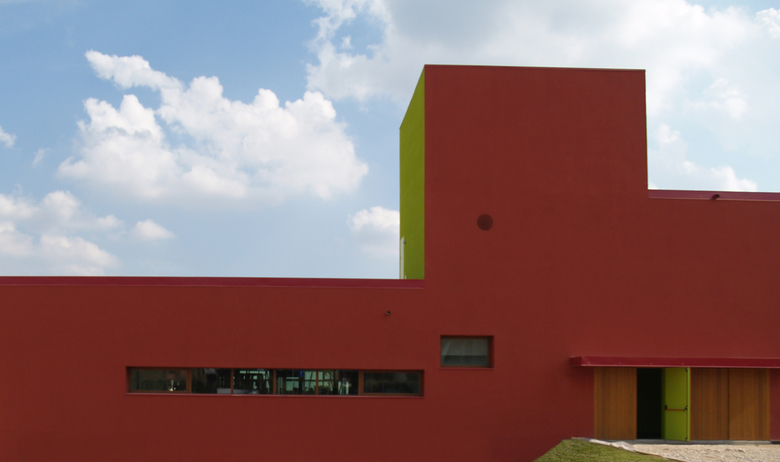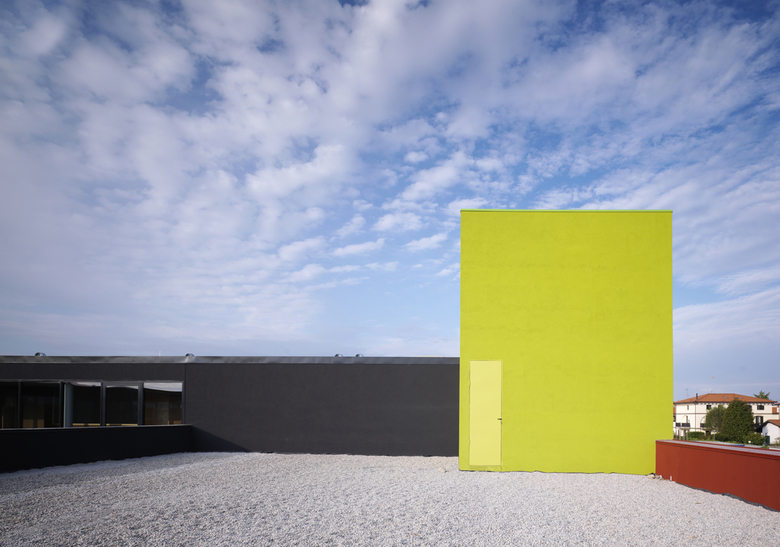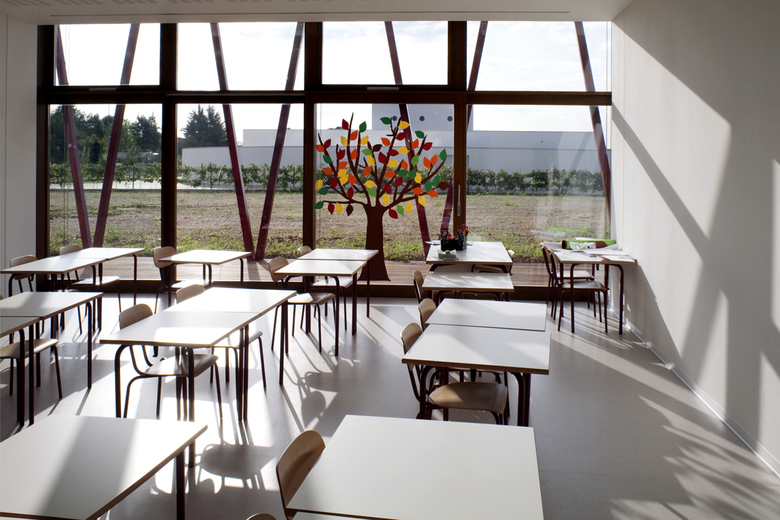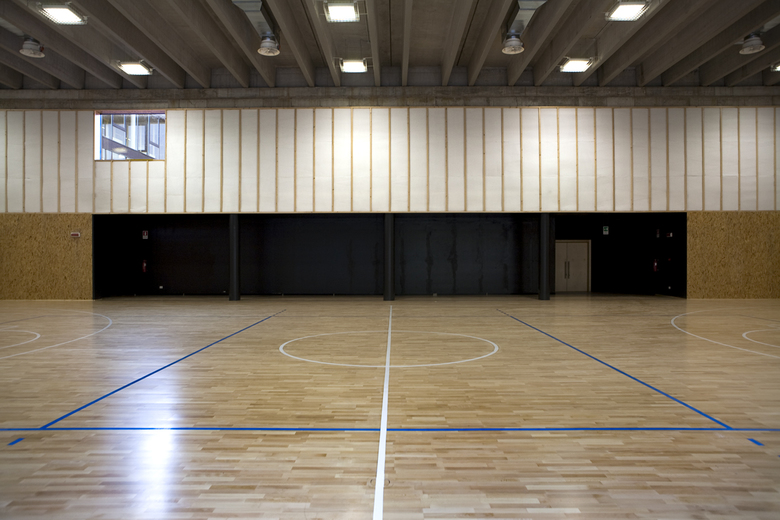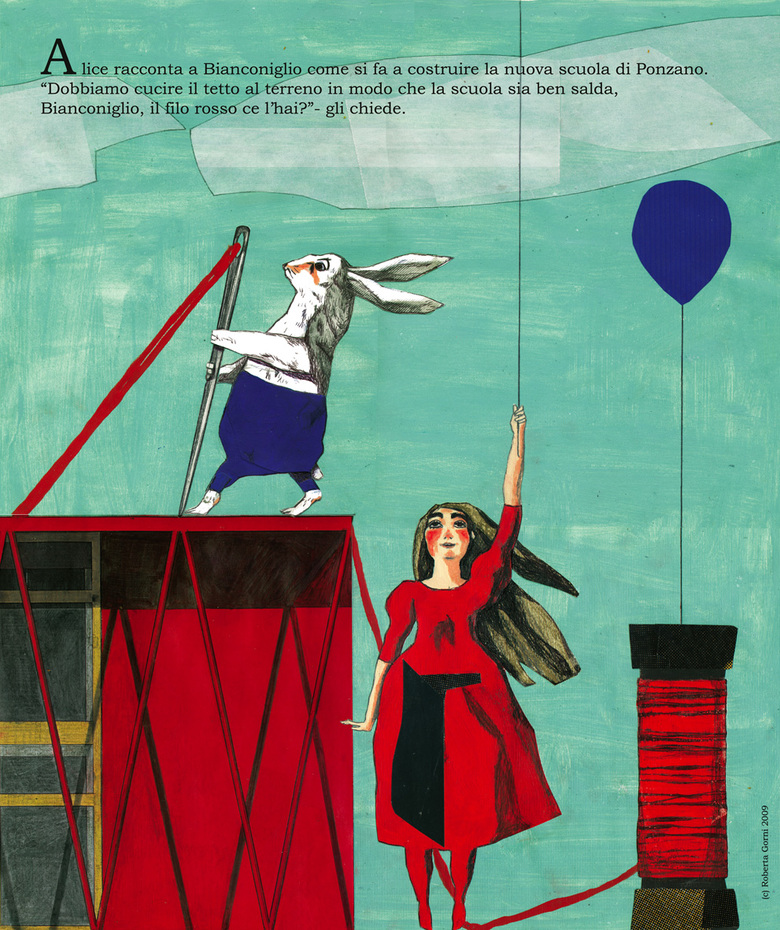PPS – Ponzano Primary School
Ponzano Veneto, Treviso, Italy
PONZANO PRIMARY SCHOOL: A ‘SOCIETY BUILDING’
Ponzano primary school is a sustainable building in energetic, social and cost control meaning.
Energy: It consumes only 3.6 kWh/mc/year
Society: participated design phase with children and teachers
Cost control: the cost of the building including furniture is 960 euro/sqm
Ponzano Primary School is designed for 375 children aged from 6 to 10. It has 15 classrooms and special classrooms for art, music, computer, language and science, a gymnasium, a canteen and a library.
Inside the sprawl of the Veneto Region, where Ponzano is settled, this Primary School constitutes a new node, a meeting place for the whole community. Part of the building (the gymnasium and some of the classrooms) is in fact accessible by everybody in the after-school hours.
The school becomes a ‘society building’ where collective spaces are very important. Firstly, in the general outline: all spaces are gathered around a central square, memory of the monastic cloisters (in the common memory they are the places of past knowledge preservation). Then, also in the design of the building's section: all the spaces face each other (though maintaining their specificity like the classrooms which are opaque until cm 130 and glazed above, allowing the children to exhibit their work towards the common spaces) and are reflected by the transparent and coloured walls.
This complexity reminds us the model of the industrial districts in Veneto where people are incited to learn from each other by exchanging experiences.
The school becomes a ‘society building’, a space of possible multietnic exchange and comparison. It becomes a threshold, were to keep together a landscape of memory and a landscape of contemporary.
In this project memory is represented by a remind to cultivation, the red coloured ‘barchessas’ of the Veneto Region. The contemporary is linked to the Benetton factories (which are in the plot nearby) and their culture of good design and philosophy spreading colour democracy all over the world.
In this sense the school design becomes the scenograpy of a dream (of a fairytail would the children say) where the main characters are the children together with their teachers and the comunity around the school.
During the design phase we wrote and illustrated a story with six panels to explain the project to the children and organised a web site (www.nuovascuola ponzano.it) where everybody could find all the materials of the project.
This partecipation activity was followed by visits to the construction site.
The design of the elevation is offered by a thin filigree. It sews together the roof and the ground and transforms the elevation in a deeper threshold designed by the shadows of the red bend pillars on the wood and glass wall inside the arcade where all the classrooms are open towards.
The arcade is also the screen against the sun together with a system of rolling curtains (mounted on a metallic structure) which automatically unroll under the control of the BMS system.
Another design topic is that of intervisibility. We are convinced that children can learn very well also copying one from the other (this is the reason why also the classrooms’ walls are glazed and can easily become windows exposing the children’s works.
Due to his huge volume, the gymnasium has been dag in the ground and natural light is brought inside modelling the ground with new enbankments.
The classrooms where the children spend most of their time face south-east and south-west so as to improve their daylight exposure. Thanks to a judicious orientation, a thick insulation, a green roof and sophisticated technologies (geothermal heating, photovoltaic panels, natural ventilation chimneys, BMS: building automation system) the school consumes only 3.6 kWh/mc/year, reaching the Italian Class A+ efficiency rating with a building cost of only 960 euro/sqm including furniture: a proof that the very strong economic and functional requirements of an educational building are compatible with energetic efficiency and high quality interior spaces.
- Architects
- C+S Architects
- Any
- 2009
Projectes relacionats
Revista
-
-
Building of the Week
A Loop for the Arts: The Xiao Feng Art Museum in Hangzhou
Eduard Kögel, ZAO / Zhang Ke Architecture Office | 15.12.2025 -
